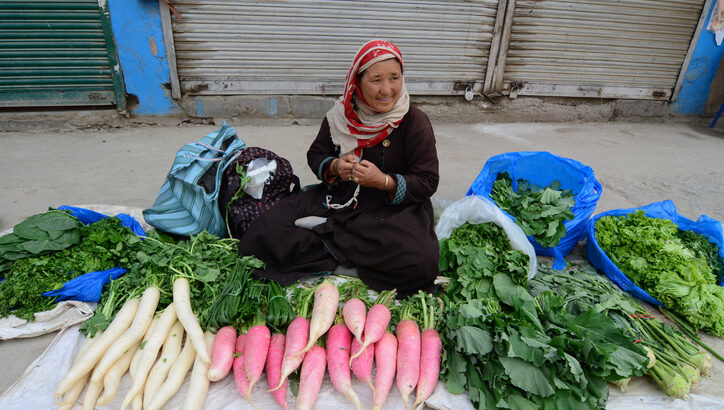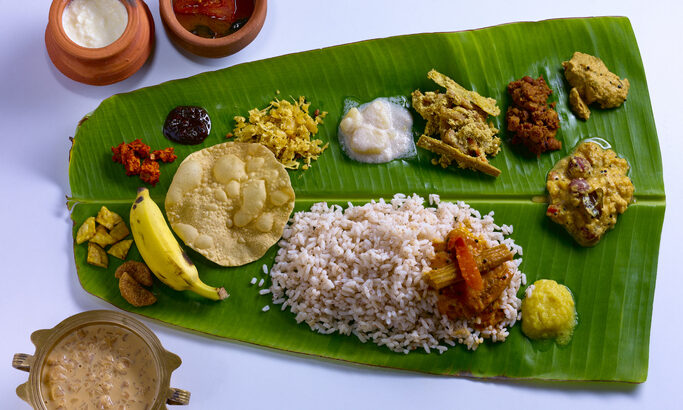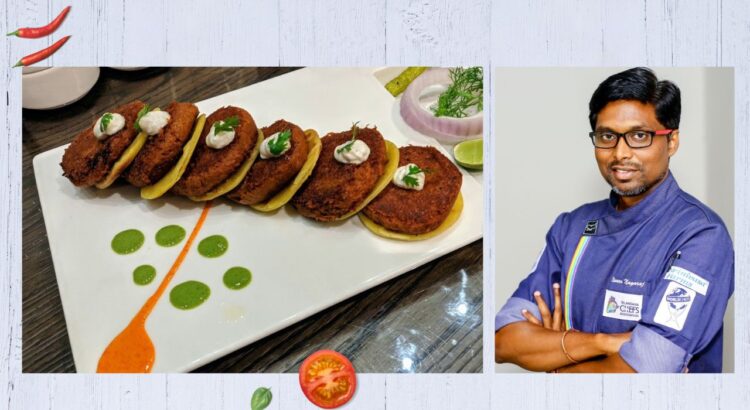Subah Saraf teaches delicious recipes that are healthy and shares knowledge about holistic living and healing through food in her book 'Satvic Movement - The Food Book'
“At least 70% of our daily diet should consist od raw foods (such as fruits, vegetables, salads, smoothies, juices, sprouts that have not been heated or cooked on fire). Actually, ‘sun-cooked’ is more appropriate term than ‘raw’ – Subah Saraf, the India–based health educator writes in her ‘Satvic Movement – The Food Book’

 Subah Safar is 23 years of age, and through Satvic Movement, a non-profit social initiative that she started when she was just 17 years old, she holds seminars, conducts workshops and hosts shows. Her aim is to teach people how to cure chronic diseases through food, without medicines. This she does by helping people transform lives by adopting nutritious diet. Through her books and workshops, she also teaches delicious recipes that are healthy and important in adapting Satvic lifestyle.
Subah Safar is 23 years of age, and through Satvic Movement, a non-profit social initiative that she started when she was just 17 years old, she holds seminars, conducts workshops and hosts shows. Her aim is to teach people how to cure chronic diseases through food, without medicines. This she does by helping people transform lives by adopting nutritious diet. Through her books and workshops, she also teaches delicious recipes that are healthy and important in adapting Satvic lifestyle.
Today (August, 2022) she has 4.26 billion followers on YouTube, 551k followers on Instagram and 72k followers on Facebook.
It all started when as a teenager Subah was suffering from PCOS, hypothyroidism and hair loss. And, she started to cultivate better eating habits and a completely plant-based menu, and that changed her way of living. She eventually reversed her health problems.
She works along with her husband Harshvardhan Saraf, who shares her passion for healthy living. He runs Vedary in Mumbai - an urban destination for holistic wellness solutions.
In her latest ‘Satvic Movement - The Food Book’ Subah demystifies age-old theories of the three body types for the layman. She explains what each food mean to each person, the variety of food, and what to avoid and what to eat more in simple language and easy to understand format. The knowledge that goes back in time, she brings it closer to the people by adapting it into the modern language.
She says – there are four qualities of food and abbreviates them as LWPW –
Living: We must not eat packaged food, and it must come directly from kitchen.
Wholesome: We must eat unprocessed, unrefined and natural food.
Plant-Based – We must eat plant-based food.
Water-Rich – Our food must be water-rich and juicy.

Her book has a whole lot of recipes, and in addition to introducing the readers to Satvic philosophy, helps them set up a Satvic kitchen, and interestingly that includes the vessels and tools required for the kitchen. She says its important to have a well-stocked satvic kitchen with fresh fruits and vegetables, and they must not be frozen or pre-packaged, include seasonal and locally available varieties.
It is not just important to know what you must eat, which by now is popular knowledge – it is also important to know how to eat, how not to eat, which combination of food to be avoid and why. It is amazing to see how well these complicated theories are unfolded in the book.
Subah lists out 21 Satvic Food Laws that one must follow, and all the recipes she has given in her book follow these 21 laws.
While she vehemently opposes eating dead meat, she does share a few points to look out for if someone really wants to drink milk. For example, she says, to be qualified to drink, the milk must be obtained from a known source, where the cow is properly looked after and fed with love.
Subah Saraf diligently puts together ‘The Food Book’ to include various aspects of vegetarian eating. There is a section on sprouts. She says it is better to grow sprouts from vegetable seeds rather than the lentils that are popularly consumed. And, she explains why. There is a whole science in growing and consuming sprouts and, it is absolutely fascinating to read what the young health educator puts together in the book. Some of these points may appear to be common and too simple; but, in today’s age of too much information and mis information, any amount of useful information, however basic it may be – is good enough.
The recipes in the book include soups, salads, smoothies, juices, main meals and different cuisines including south Indian, Thai and Italian. According to her the first meal of the day is ‘Pre-Breakfast’. She recommends five meals per day, and the fourth meal is optional. Satvic and healthy recipes do not exclude the desserts. She shares how its possible to have kheer, gajar halwa, laddoo, kulfi and even lemon cheese cake in their satvic form.
And for the finale – there a touch of wellness in the book. Sarah gives recipe for a Rose Cleanser – a little bonus. Her Book 2 in the series is out as well. The details are available on the website - satvicmovement.org

















 Naveen studied from IHM Hyderabad in 2001. He worked in Pune and Aurangabad before working on a cruise ship for nine long years where his knowledge of European cuisines strengthened. Back in Hyderabad, he worked for Ohris group and Holiday Inn, before teaming up with Rajdhani Hotels, for their new fine dining alacarte vegetarian restaurant with a clear focus - quality, taste, service and ambience.
Naveen studied from IHM Hyderabad in 2001. He worked in Pune and Aurangabad before working on a cruise ship for nine long years where his knowledge of European cuisines strengthened. Back in Hyderabad, he worked for Ohris group and Holiday Inn, before teaming up with Rajdhani Hotels, for their new fine dining alacarte vegetarian restaurant with a clear focus - quality, taste, service and ambience. Tatva opened in the prime location on Road No 36, Jubilee Hills, Hyderabad. This restaurant on the first floor is spacious, airy and bright. The wooden elements in the décor, antique furniture used as statement pieces and the modern chairs and tables give it a contemporary look with a touch of tradition. The décor pieces and the paintings on the walls complete the understated luxury look that the restaurant aims to sport.
Tatva opened in the prime location on Road No 36, Jubilee Hills, Hyderabad. This restaurant on the first floor is spacious, airy and bright. The wooden elements in the décor, antique furniture used as statement pieces and the modern chairs and tables give it a contemporary look with a touch of tradition. The décor pieces and the paintings on the walls complete the understated luxury look that the restaurant aims to sport. Instead of meat in a kebab, lotus stem was used to make the melt-in-the-mouth Galouti kebab, and instead of a regular paneer tikka – there was a Smoked Paneer Pesto Tikka for the X factor, and Jalpeno Poppers for the Mirchi Bajji lovers. Ingredients like Makhna and Water chestnuts made their way into the menu. Commonly found dishes like Methi Chaman and Paneer Tikka Masala got the Tatva touch. “Just by using the best of ingredients the dishes became more superior than most restaurants,” shares Naveen. “Slowly people began to understand what is the difference between a
Instead of meat in a kebab, lotus stem was used to make the melt-in-the-mouth Galouti kebab, and instead of a regular paneer tikka – there was a Smoked Paneer Pesto Tikka for the X factor, and Jalpeno Poppers for the Mirchi Bajji lovers. Ingredients like Makhna and Water chestnuts made their way into the menu. Commonly found dishes like Methi Chaman and Paneer Tikka Masala got the Tatva touch. “Just by using the best of ingredients the dishes became more superior than most restaurants,” shares Naveen. “Slowly people began to understand what is the difference between a